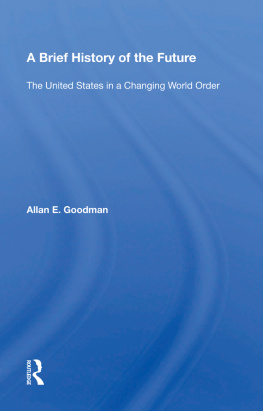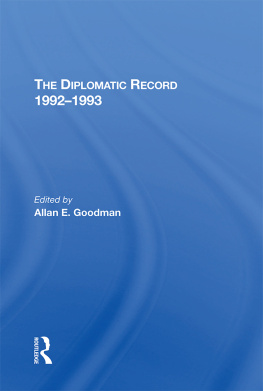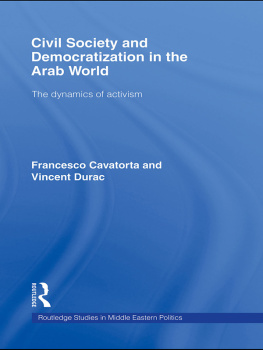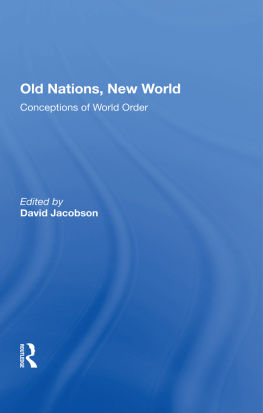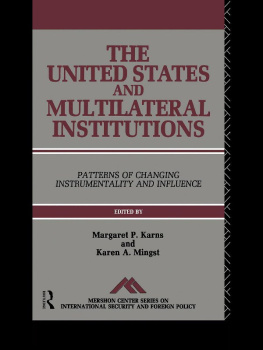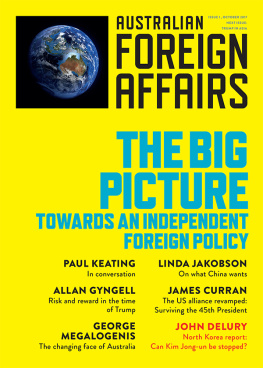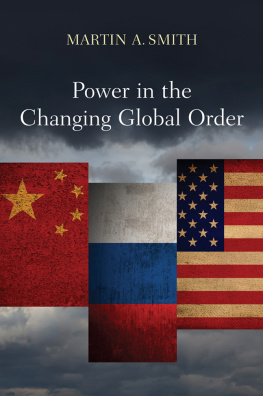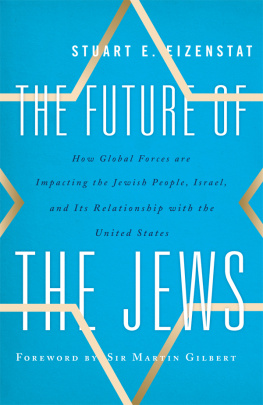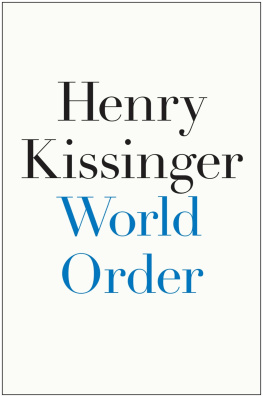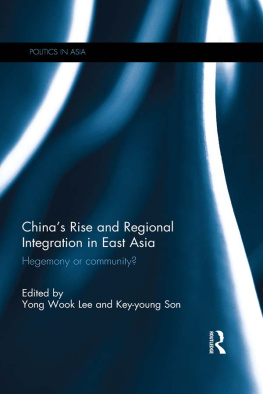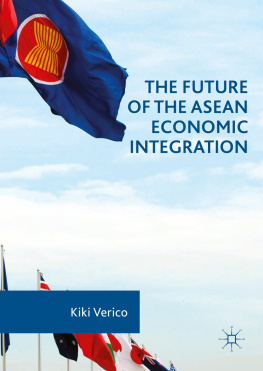First published 1993 by Westview Press
Published 2018 by Routledge
52 Vanderbilt Avenue, New York, NY 10017
2 Park Square, Milton Park, Abingdon, Oxon OX14 4RN
Routledge is an imprint of the Taylor & Francis Group, an informa business
Copyright 1993 by Taylor & Francis
All rights reserved. No part of this book may be reprinted or reproduced or utilised in any form or by any electronic, mechanical, or other means, now known or hereafter invented, including photocopying and recording, or in any information storage or retrieval system, without permission in writing from the publishers.
Notice:
Product or corporate names may be trademarks or registered trademarks, and are used only for identification and explanation without intent to infringe.
Library of Congress Cataloging-in-Publication Data
Goodman, Allan E., 1944
A brief history of the future: the United States in a changing
world order / by Allan E. Goodman.
p. cm.
Includes bibliographical references and index.
ISBN 0-8133-1620-0. ISBN 0-8133-1621-9 (pbk.)
1. United StatesForeign relations1989- 2. World
politics1989- I. Title.
E840.G66 1993
327'.09'049dc20 92-41983
CIP
ISBN 13: 978-0-367-00486-6 (hbk)
Five hundred years after Christopher Columbus persuaded the Spanish monarchy to underwrite exp lor atio n his contemporaries had ridiculed, museum visitorsin Washington had a chance tosee why discoverybeckoned. Called Circa 1492, some 569 artifacts of all types from around the time that Columbus sailed for what he thought would be China but turned out to be a new world were gathered at the National Gallery of Art. The exhibit provided a look at how rich the imagination of humankind was even at the beginni ng of the Renaissance.
Theexhibition showed the stateof our global thinking a t the time Columbus set off. I was startled to see how quickly we left the Dark Ages behind us and were able to make a transition from thinking about the world of the village and the cloister to the world beyond the cities and microstates in which we lived. I marveled at how far the desire for trade and its benefits took essentially ordinary people as well as egotists like Columbus. With such trade, I saw, not only was everyday life enriched, but our aspirations and reach were enlarged. And I was deeply struck by thecentral role vision appeared to play in making it possiblefor Columbus and the discoverers in everycultur eat the timetoha ve their dreams about what lay ahead and where.
At the beginning of the exhibition was a beautiful map drawn in 1375 at Majorca by a skilled draftsman who had to be part cartographer and part visionary. Scholars of the period think this person was named Abraham Cresques; I think he must have been extraordinary. The map, known today as the Catalan A tlas, contains much that is wrong and includes sketches from portions of a world that Cresques could not have actually known to exist. But he aimed at making a representation based on everything: secret and other closely held charts of the navigators of the era, books by and reports from travelers to the farthest-flung parts of the known earth, and the predominant myths, legends, and religious teachings then used to explain known and surmised geographical facts. Places Cresques could not have visited or from whichhe could not have had reliabl e reports from thosewho did, he imagined. And in so doing, his atlas showed people like Columbus and the rulers on whom they came to depend that the world could be far greater and more interesting than the immediate surroundings of their court. Cresques also appended to his maps a set of theories about how the earth itself was related to the msmos and about the dynamics of the forces thought to determine those fundamental elements that affected daily life no matter where one lived.
This book is also an attempt to provide a representation of a world in which none of ushave lived and of its potential dynamics. My" sources" are as varied as those Abraham Cresques used to develop his atlas, and the results may be as flawed. But the whole point was to try to envision a world fundamentally different and better than we have known during the cold war era.
Trie idea to undertake such a forecast and write such a book took shape in my mind while preparing an address I was asked to give at the 92nd commencement exercises of Mount Ida College. I thank that college's president, Dr. Brian Carlson, and the trustees for inviting me to do so; Dr. Carlson is himself deeply engaged in thinking about new futures for U.S. colleges and my work on this book also benefited from reflecting on the strategy and position papers he prepared in launching the college's Naples Institute. I am also very grateful for the encouragement and superb support given by Jennifer Knerr and hereditorial colleagues Libby Barstow and Cheryl Carnahan at Westview Press. Nothing is more helpful to an author than a publisher like Westview that is enthusiastic and also critical at just the right times and spaces.
While writing, I was fortunate to have the chance to share my forecast with participantsintheGeorgetownLeadershipSeminarandtheIBMinternational Personnel institutes held attheSchoolofForeign Service in 1991and 1992. My research assistant, Sandra C. McMahon, with whom I have also written another Westview book entitled Making Peace , did much to help me fill in the blanks and detect the discontinuities that developed as I wrote; she also compiled the Appendix and contributed the special focus and "dateline" features that occur in most chapters. Susan Lubick supplied important but hard-to-fin d dataaboutworld technologicaldevelopmentsand U.S. government operations. The following colleagues read and critiqued the manuscript at various stages: Madeleine Albright, Hans Binnendijk, Maria Carland, Chester Crocker, Harm De Blij, Peter Dunkley, Theodore Geiger, David Gries, Gary Hofbauer, Peter F. Krogh, Louis Marmon, M.D., John McNeil, Theodore Moran, David Newsom, Henry Nowik, H.K. Ranftle, Richard Scribn e r, David Taylor, Seth Tillman, and Abiodun Williams. The students who took my spring 1992 seminar on analysis and forecasting provided constant reference points for and tenacious arguments with what I was planning to write. Andrew D'Uva, Executive Assistant at the Schcx)l of Foreign Service, helped greatly inacquiringandapplyingthe latesttechnologyto converta manuscript of many parts into a text ready for printing.
To all: Thank you.
Allan E. Goodman

